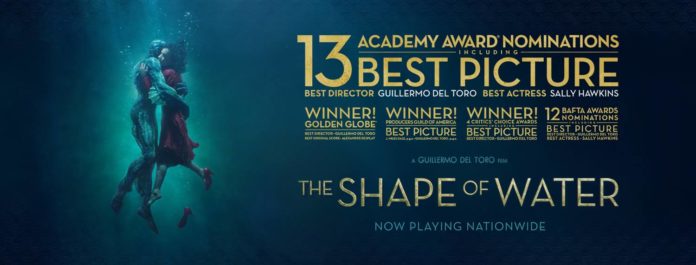By Nathan Keil | Sports Editor
Comedian Jimmy Kimmel will host the 90th Academy Awards Sunday night at the Dolby Theatre in Hollywood, Calif.
The late night talk show host returns for his second go-round, after hosting the Academy Awards in 2017, the one infamously known for the “La La Land” and “Moonlight” Best Picture debacle.
But Sunday night is not about Kimmel rectifying the mishap of the swapped envelopes — It’s about celebrating achievements in film over the past year and honoring those who have contributed to the film industry with their hard work, dedication and ceaseless commitment to the creative process that goes into creating a film start to finish.
But far too often, after watching these award shows, we don’t remember much aside from which film wins Best Picture or who takes Best Actor or Actress. We may also remember who won Best Director, or who made a memorable special appearance, like John Travolta’s famous Idina Menzel screw-up in 2014; but the Academy Awards is so much more than the final statue that celebrates the complete, collaborative effort between hundreds of hard-working Hollywood specialists. It is more than the actors who portray their characters with poise and conviction that inspires others.
Film at its core is the art of storytelling, and each story is composed of various elements. Many of these stories receive recognition on this particular night but quickly fade away — The orchestra music almost instantly begins to chime, cueing the award recipient’s prompt departure from the stage.
Five-time Oscar nominated director Christopher Nolan once told The Director’s Guild of America, “Every film should have its own world, a logic and feel to it that expands beyond the exact image that the audience is seeing.”
Film is so much more than the image portrayed on the screen. The stories told extend into to the ending credits, where hundreds of names are often recognized for screenwriting and music scores, for costume design and sound editing. Film is about mixing and production design, and it’s time that we actually acknowledge these achievements — not with a 30-second speech, but with the appreciation and praise creatives truly deserve.
Although some of the integral moving parts of film production may never receive proper recognition, I want to highlight a few key Oscar categories that I think should get some extra attention come Sunday night, the first being “Best Original Score.”
This category is loaded with musical giants—John Williams’ score for “Star Wars: The Last Jedi,” Hans Zimmer for “Dunkirk,” Carter Burwell for “Three Billboards Outside Ebbing, Missouri, ” Alexandre Desplat for “The Shape of Water” and —newcomer to the category, but not to aging rock music — Radiohead guitarist and keyboardist Jonny Greenwood’s score for “Phantom Thread.” This list alone has captured seven Academy Awards, with Williams winning five and Desplat and Zimmer each winning once.
In “Dunkirk,” the music captivates the audience and elevates its heartbeat with its ominous tone, anticipating the rescue of Allied soldiers from the German army. The music is so deeply entwined with the film’s sound design that it’s difficult to tell the two apart.
In “The Shape of Water,” Desplat summons hints of old Hollywood, using a mix of flutes, accordions and whistling to accompany Elisa and the amphibian man’s transcendent journey of love and acceptance.
Williams takes viewers down a familiar road, but one that deserves to be frequently revisited in “The Last Jedi.”
Burwell, a 30-year Hollywood veteran, uses guitars to accentuate Mildred’s highs and lows as she pursues her daughter’s killer in Ebbing, Mo. Greenwood’s use of strings and piano are synonymous with the style of the main character, a 1950s London dressmaker.
All these scores, as well as those that did not receive nominations, are pivotal to the success of each film and its storytelling elements. Moviegoers and art enthusiasts should appreciate the factor of cohesiveness music brings to the films we love.
Just as important as “Original Score” and “Original Song” are the categories “Sound Mixing” and “Sound Editing.” This year, the same five films are nominated in both categories—“Baby Driver,” “Blade Runner 2049,” “Dunkirk,” “The Shape of Water,” and “Star Wars: The Last Jedi.” Moviegoers’ natural expectation is that films will exhibit perfect sound quality no matter the situation on the screen. And yet, many of us do not fully understand the work that makes this expectation a reality.
Film enthusiasts often confuse sound mixing and sound editing. According to Premium Beat, the two are starkly different in nature. Sound editing involves choosing the right sound effects, dialogue, ADR (additional dialogue replacement), foley effects (everyday effects) and assembling them into the film’s final cut. The sound mixer then adjusts the levels on every audio file. These are two vastly different areas of expertise that often go underappreciated as we celebrate the Oscars each year.
As tempting as it may be to tune out these “lesser” categories and stick to the acting, directing and Best Picture awards, I urge you to resist. Take the time to appreciate the plethora of gifts and achievements being recognized in each of the award categories. Every film tells a story — some more familiar than others — but each story is incomplete without the help of many talented artists and professionals. Their steadfast work and dedication tie up the loose ends to make the films we love each year. It’s time we give them their due.






